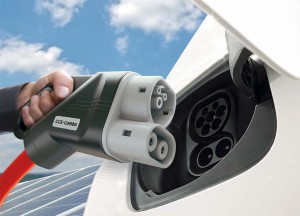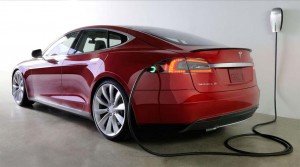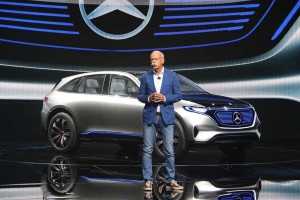Another barrier to electrification is about to fall, thanks to a new coalition pairing BMW, Daimler, Ford and the various Volkswagen AG brands.
The automakers have signed a preliminary agreement that would begin rolling out a network of ultra-fast electric vehicle charging stations across Europe – setting the stage for the adoption of similar Level 4 technology in the U.S., as well. The chargers will deliver 350 kilowatts of direct current, or roughly 2.5 times the jolt of the Superchargers Tesla is deploying across much of North America.
The new system would leapfrog other Level 3 chargers just beginning to come online in many parts of the world. More importantly, they would allow a vehicle like the new, 200-mile Chevrolet Bolt (or the European version sold through Opel) to get a full charge in 10 minutes or less.
Industry experts have warned there are three key obstacles to the widespread adoption of battery propulsion: range, cost and charging times.
The advent of the new Bolt, as well as the upcoming Tesla Model 3 and other long-range models under development, help address the first two issues, boosting range to something akin to what a conventional, gasoline-powered vehicle can deliver.
(Start-up Lucid Motors becomes latest to take on Tesla. Click Here for the story.)
Battery prices have fallen by as much as 80% since the beginning of the decade. General Motors claims it is paying around $150 per kilowatt-hour for the cells in the Bolt, and other manufacturers believe the figure could soon be down to $100 or less per kWh. That would put battery-electric drivetrains on a par with the internal combustion engine.
Charging has been the big roadblock. Using a standard U.S. home’s 120-volt current requires a nearly all-day charge for a vehicle like the Bolt whose battery has drained. Using European 240-volt power, or the home Level 2 chargers widely available in the States can cut times down to hours. But to be competitive, experts stress, that’s simply not good enough.
Tesla has bitten the bullet with the Supercharger network, its proprietary Level 3 system running at 440 volts DC and providing energy of up to 145 kilowatt hours. Eventually, the California carmaker plans to have hundreds of those stations set up across North America, as well as in China and Europe – though its unique plug will not work on competitors’ products without an adaptor.
The Superchargers can take a Tesla Model S or X and deliver an 80% “refill” in around a half-hour, depending upon the vehicle’s state-of-charge and the size of its battery pack. That’s in line with what the new generation of public Level 3 chargers being set up by public and private firms, such as EVgo, can yield.
But experts warn that still isn’t truly competitive with what motorists are used to today. And they note that there can be long lines at some Tesla Superchargers, especially along high-traffic routes, further delaying motorists.
(Porsche aiming to sell 20,000 Mission E battery sports cars annually. Click Here for the story.)The new European consortium essentially wants to make charging as simple and quick as gassing up. The partners plan to get the project underway by setting up 400 of the new chargers along major routes across Europe. Unlike Tesla, the network will adopt the industry-standard CCS plug system to maximize the number of vehicles that will be able to connect.
“The availability of high-power stations (will allow) long-distance e-mobility for the first time and will convince more and more customers to opt for an electric vehicle,” said Dieter Zetsche, Chairman of the Board of Management of Daimler AG and Head of Mercedes-Benz Cars.
Daimler is making a big push into electrification. All of its new Smart models will be offered with battery-electric drive options and it is launching an all-new sub-brand, Mercedes-EQ, that will offer a wide range of all-electric models by 2025. Indeed, all of the partners in the project are rolling out new long-range electric models, as well as plug-in hybrid models that will be able to tap into the new charging network.
The first of the new stations will begin going online next year in Europe. The partners have meanwhile invited other competitors to join in.
As to the U.S., there are no firm plans to get to Level 4. The current state-of-the-art Level 3 systems are just beginning to roll out. But with the U.S. Environmental Protection Agency this week saying it will stick with its tough, 54.5 mpg fuel economy standard, pressure to get American motorists into battery cars is growing. Observers believe it won’t be long until American energy providers take similar steps.
There is a caveat, however. Many of today’s battery vehicles are limited to Levels 1 and 2 charging. That includes the original versions of the Chevrolet Volt plug-in and Nissan Leaf battery-electric vehicle. More new products are adding Level 3 hardware, however, and Level 4 capabilities would likely follow if the charging infrastructure were to become available, industry officials indicate.
(Obama admin upholds 54.5 mpg rules – but will new Trump admin reverse course? Click Here for the story.)



